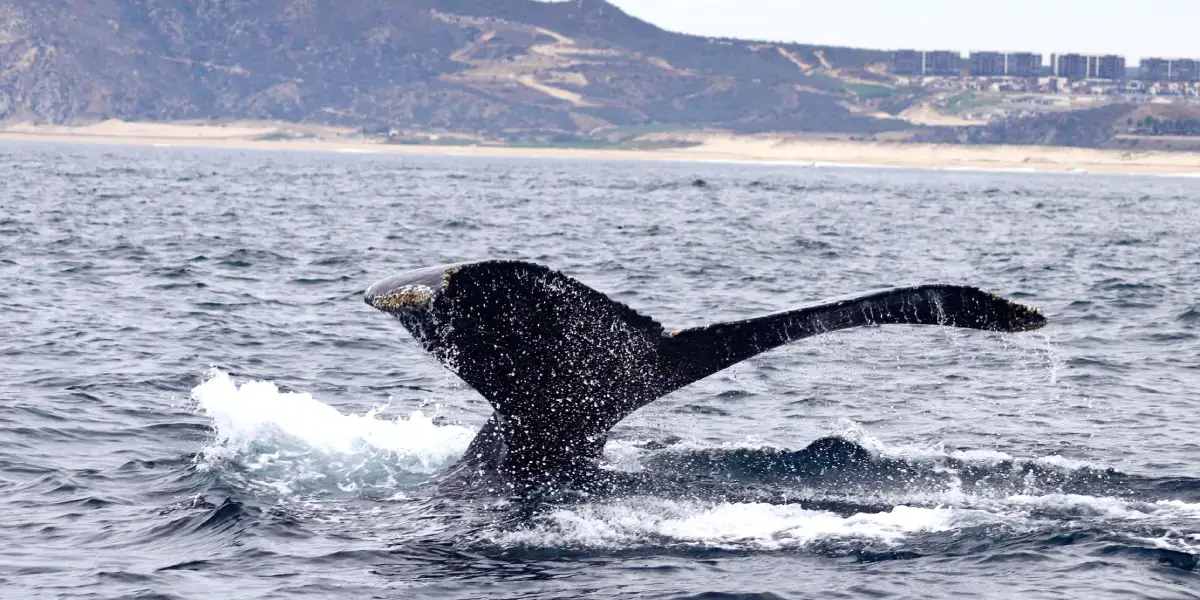
LOS CABOS January 21, 2025
Los Cabos is a fabulous destination on the Pacific Ocean coast of Mexico. It is an oasis in the middle of the desert that combines excellent views, from the calm ocean to rocky mountains with a warm and cozy climate.
There are various activities that you can do during your visit to San José or Cabo San Lucas. Even if you are passionate about adventure and exploring the surroundings, you can find wonderful places that are outside the tourist brochures. However, if you want a quiet trip or it is your first visit and you don't know where to start, you can take advantage of your time getting to know the city through tours, although one of the main activities that you should not miss is whale watching.
Thanks to the privileged location of the Baja California Sur peninsula, in Los Cabos we can see the whales during the months of December to March. They come in search of warmer waters and food that they find abundantly in the Sea of Cortez, temporarily leaving Alaska and British Columbia.
Among the most popular species, it is possible to find the Minke Whale, Gray Whale, Byrde’s Whale, Fin Whale, Humpback Whale, Blue Whale and Sei Whale.
Fun Fact: Male humpback whales are excellent singers. During the migration and mating season, whales communicate in their pods; with male humpback whales, their songs can be heard up to over 20 miles away and can even last over 20 minutes.
What is the best season to see whales in Cabo?
The SEMARNAT (Secretariat of the Environment and Natural Resources) declares that the official whale watching season is from December 15 to April 15; however, you can see some jets of water launched towards the surface a little before and after the dates mentioned above. Although nothing guarantees you will see them, in the months of January and February there are more whales, so the chances increase considerably. Read more about the best time and tips to prepare for whale watching in Cabo.Travel Tip:
The whale season crosses the low season. You can choose to travel after the holidays, during February or the first weeks of April, when costs are still low and it is whale season.

Whale Watching tours
During these dates, you can take one of the several excursions that exist for whale watching. Ask for the most recognized providers, since although we do not guarantee in any of the tours that you will observe them, experienced guides know where they can find more whales, and your probability of seeing them will be much greater.
You can take the tour as early as possible, so you will find the sea calm, with less wind and fewer waves. This is the ideal time for people who get seasick or have families with small children; don't forget to bring sunscreen.
If you prefer to go out a little later, close to noon, the sea will be rougher and the sun will be full, so you will need an extra layer of sunscreen, but with the great advantage that the activity of the whales and calves is greater, because of the temperature of the water and because the high tide of the night is approaching.
Recommendations
It is important to mention that although your desire to get too close is as big as the whale’s, each boat may be at a certain distance and with the engines off so as not to violate the whale's space or harm it; although if you are lucky, the playful calves can approach the boats. If this happens, we only remind you to appreciate them with great affection and care.
Don't forget to pack a backpack with water, sunscreen (preferably biodegradable), medicine for motion sickness, a hat or cap, a towel, a light sweater, a light snack, and of course, your camera or cell phone so you can take unforgettable memories home with you.
Enjoy your trip and take care of the environment so that when you fall in love with Los Cabos, you find it more beautiful every time you return.
Five curiosities of humpback whales
- They have fingerprints, or something similar. Humpback whales also have something that distinguishes them, and that is their tail. The rear fin of each of them is different. It is for this very reason that a catalog of these is kept in order to identify each whale.
- Whales are not fully aquatic animals. These creatures are actually mammals, which means they breathe air through lungs, like humans, and they breathe through their blowhole, which shoots out jets of water every time they surface.
- They are very smart! Whales communicate through their own language. Different whales have their own dialect or song that they learn as they grow up.
- The whales make their own song remixes. The male whales are the ones that sing during the mating season to attract a mate. If the previous year's song did not work, they would change it. In the same way, if their song works, they change to improve their melodies.
- Their mouths are huge! And their tongue can be the size of a small car. It is for this same reason many people can be afraid of them, although they only eat plankton, krill or small fish. This is because their throat is not much bigger than a grapefruit, so they have to eat large amounts of small prey each day.Their
PREVIOUS POST NEXT POST